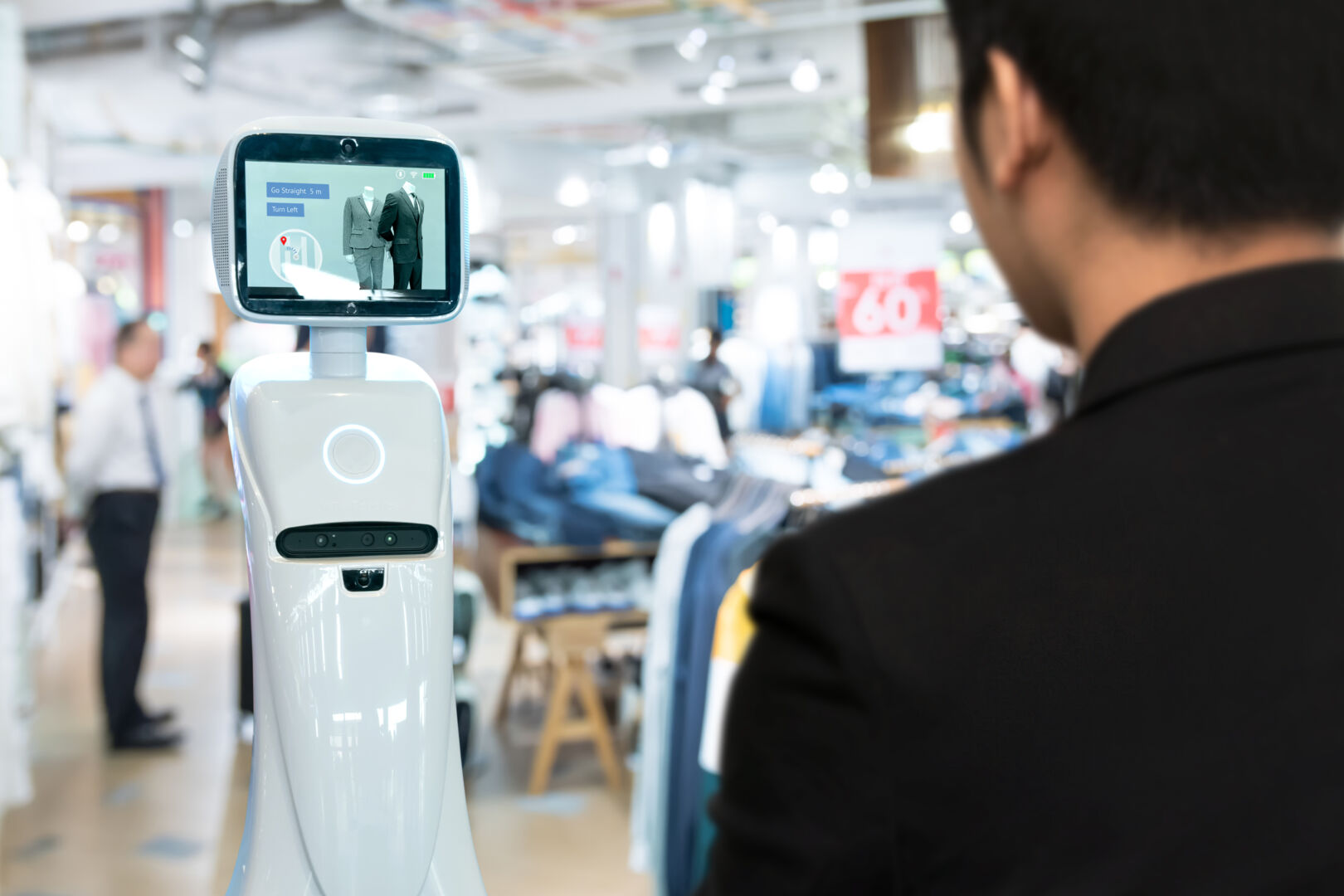As the e-commerce industry continues to rapidly evolve, merchants must keep pace with the latest trends and technologies to remain competitive, and one crucial aspect of that is having an omnichannel strategy. In today’s market, omnichannel is no longer just an option, but a necessity for driving sales and engaging customers.
Therefore, to ensure success in 2023 and beyond, online retailers must prioritise the development of a sophisticated omnichannel strategy that meets the needs of modern consumers. By leveraging the latest technologies and techniques, they can provide a frictionless shopping experience that caters to customers’ preferences and encourages repeat business.
In this article, we will explore some of the top omnichannel trends we expect to see in the near future.
- AI usage will continue to expand
- More offline experiences
- In-store like experiences
- A focus on social selling
- Nurture your relationships
- Diverse payment options
- Same-day and next-day delivery
1. AI usage will continue to expand

As digital transformation continues to revolutionise the e-commerce sphere, merchants are exploring innovative ways to leverage AI technologies to deliver a more personalised shopping experience for customers.
The AI technology powering chatbots has already found many applications in the world of online shopping. More and more online stores are expected to adopt the use of chatbots to provide users with instant support and assistance, enhancing their shopping experience and ultimately increasing sales.
Retailers will also need to focus on delivering a seamless and personalised shopping experience that replicates the in-store experience. Many are now able to leverage AI technologies and connect all e-commerce tools to provide customised recommendations, real-time support, and personalised content. Retailers who can effectively meet consumer expectations for a personalised, in-store experience while shopping online will be well-positioned to succeed in the long term.
AI can also be your good ally in predicting customer behaviour. Research shows that to follow eMarketer retail trends for 2023, we must dedicate special attention to Generation Z. Since they will soon be the dominant online buyers, and their shopping habits are yet evolving, it is crucial to follow their interests and values. AI can help you generate valuable data and extrapolate it to further develop your business.
2. More offline experiences

With the pandemic accelerating the shift towards online shopping, brick-and-mortar retail has taken a hit, and many retailers have had to adapt quickly to a predominantly virtual environment. However, three years on, with life returning to a great degree of normalcy, businesses have shifted to working on incorporating brick-and-mortar experiences back into the mix.
By the looks of things, we are stepping into an era where a sophisticated omnichannel strategy will entail servicing customers across all virtual and physical spaces. That is why retailers will need to ensure an excellent customer journey between online and in-store shopping, by allowing customers to move easily between the two.
One way to achieve this is by offering click-and-collect services, which provide customers with the option to place orders online and pick them up in-store. This provides the convenience of online shopping, with the added benefit of in-store experiences. Another trend that is gaining momentum is virtual shopping, which refers to the use of VR and AR simulation technology to explore products from all angles before buying them.
3. In-store like experiences

As we have previously mentioned the potential of AI chatbots, we should also note they can be useful in providing the in-store experience. However, it can still be beneficial for your store to have customer service personnel that bots cannot replace just yet.
Just as we are used to walking into the store and turning to the salesperson for questions or advice, live chat for e-commerce can contribute to creating the same experience. They make your shoppers feel valued and appreciated.
Moreover, the information you gather while supporting your customers can be of value in your sales data analysis. Because the customers will contact you, and not the other way around, they can answer some questions you wouldn’t consider asking. This way, you can constantly improve their online shopping experience in your store.
4. A focus on social selling

Having a strong presence on social media has become one of the cornerstones of just about any company’s marketing strategy, in just about any niche. There are two main reasons why this is the case:
- Social media allows customers to better interact with your brand, learn about products, and join a community with other customers. Thus greatly boosting brand visibility and reputation
- Many social platforms have added the option of in-platform shopping, allowing customers to make purchases directly within their dedicated apps
To build a successful social media presence, the first step is to create relatable and genuine online personas that resonate with users. Working with social media influencers or putting out quality user-generated content can all be effective ways to appeal to your target audience as well.
Moreover, successful merchants make an effort to stay on top of the latest trends to interact and engage with consumers across multiple channels. If you’re still not on TikTok, for example, it would be wise to change that ASAP. Platforms that prioritise short-form video content offer a unique opportunity for retailers to create engaging and interactive content that resonates with their target audience. By using these channels effectively, as well as tools like omnichannel customer engagement software, merchants can effectively boost engagement and drive ROI.
5. Nurture your relationships

The essential part one omnichannel marketing guide should include is communication with your audience. If you are not ready to engage with your clients on each platform, you should reconsider which channels you should keep and which ones to drop for the time being.
While e-commerce sales strategies focus on attracting new buyers, keeping your loyal customers is just as important. Loyalty programs, referral marketing campaigns, improving your store by collecting feedback from your regulars – these are the trends that won’t go away.
An important aspect of social selling is relying on your satisfied customers. User-generated content is the key to successful sales, so your best partners in growing the e-commerce store are your loyal buyers. Collecting feedback from your audience, as well as capturing customer reviews, is a great base for creating strong and engaging content for social media platforms.
6. Diverse payment options
.jpg?width=1200&height=800&name=shutterstock_793446394%20(1).jpg)
Retailers who want to stay ahead of the curve will need to consider incorporating alternative payment methods to cater to the growing trend of hybrid shopping. This means embracing digital wallets such as PayPal, Apple Pay, Amazon Pay, and Google Pay, as well as keeping up with the pace of innovation as new providers enter the market.
While credit cards will still have a place in the payment ecosystem, they will no longer be the only option. Consumers are increasingly looking for faster and more convenient ways to pay, and retailers who can offer a range of payment methods will have an edge over competitors. Digital wallets, in particular, offer a frictionless and secure payment experience, which can contribute to increasing customer trust and satisfaction.
In addition to digital wallets, retailers may also consider integrating other payment technologies, such as cryptocurrency, which is gaining traction in some markets. Companies like Tesla and PayPal have already started accepting Bitcoin as a form of payment. As more consumers adopt cryptocurrencies, retailers should explore how they can incorporate these new payment methods into their e-commerce operations.
7. Same-day and next-day delivery

The growing demand for fast and reliable delivery options has been a key trend in the e-commerce industry for several years, and with everyday life going back to normal, this trend is bound to continue. With customers seeking instant gratification and convenience, same-day and next-day delivery may just become a standard expectation, rather than a luxury.
To meet this demand, retailers should invest in their supply chains and partner with trusted logistics providers to improve their delivery capabilities. Apart from that, the adoption of new technologies, such as automation and robotics, can also help speed up the fulfilment process while reducing costs.
Although this kind of experience is not possible for an internationalised online store, brands targeting a national or more local audience should work on their logistics to make fast delivery the norm.
In the future, it is expected that same-day and next-day delivery will become even more accessible and affordable for retailers of all sizes. Large retailers are likely to continue expanding their distribution networks and investing in delivery infrastructure, while smaller retailers may leverage third-party providers to offer faster and more affordable shipping options.
Takeaway
Although nobody can predict the future, one thing is for certain: the e-commerce landscape will continue to rapidly evolve. Down the line, it looks like this evolution will see an even bigger shift toward a more integrated omnichannel approach. Retailers who invest in their omnichannel strategy are likely to gain a competitive edge and improve their operations and results on all fronts.
About the author:
Nikola Sekulic is a seasoned brand developer, writer, and storyteller. Over the last decade, he’s worked on various marketing, branding, and copywriting projects – crafting plans and strategies, writing creative online and offline content, and making ideas happen. When he is not working for clients around the world, he is exploring new topics and developing fresh ideas to turn into engaging stories for the online community.

